If you pay attention to movies at all, you’ve probably heard of – and should have seen – RRR, the incredible, ridiculous, and insanely over-the-top 2022 historical action-drama epic about colonialism, friendship, and loyalty. The film was directed and co-written by S.S. Rajamouli in the most expensive Indian film production to-date. Rajamouli previously made waves on the internet for this preposterous scene in his previous film, Baahubali 2: The Conclusion, and he’s probably the world’s most well-known director in Tollywood (not Bollywood, as his films are in Telugu, not Hindi). Japan loves Indian films, too – a recent ad at my local cinema taught me the word マサラ上映 masara jouei, or “masala screening”… which is apparently the Japanese term for a participatory/singalong-style showing of an Indian film where moviegoers are invited to recite dialogue (or, well, the subtitled dialogue) in real-time, dress up in costume, and emotively react to scenes. (This seems like the antithesis of most Japanese movie theater experiences I’ve had so far, so honestly I’d be interested in going…)
I think RRR really began to take off in Japan once its iconic “Naatu Naatu” scene & song won Best Original Song at the Oscars and Golden Globes last year, causing its associated dance and awards show performance to finally spread eastward on social media like wildfire. So what was this country to do with an outrageously over-the-top foreign movie that depicts one of the greatest bromances ever? Well, have the Takarazuka Revue adapt it into an even more over-the-top musical with super gay undertones, of course.
No matter how I try to describe the Takarazuka Revue, it feels insufficient. Sure, it’s Japan’s oldest theatre troupe, with all-female performers, dating back to 1913… but it’s more a world unto itself with a depth and breadth that – as I discovered – takes hours to even begin to comprehend. Reading the Wikipedia article in its entirety is probably a good idea, but I’ll attempt an overview here. For starters, all of its actresses and staff are… railway company employees? Oh, well, naturally, that’s because it was created by industrialist-slash-politician Ichizō Kobayashi (Juzo Itami’s namesake!) who founded Hankyu Railway, building rail from Osaka out to the small hot springs town in the west… and then to attract people to the area and get them to ride the train, he started up a theatre company… and a department store, and a baseball team. He also built housing around the stations, a first for Japan in the early 1900s (woo, transit-oriented development!) And while he was at it, he founded Toho, which distributes all the Ghibli and Godzilla and Kurosawa films, and the Pokémon anime, and also runs some of the biggest cinemas in the country. (Unquestionably an industrialist…)
All roles in Takarazuka Revue productions are played by women, an intentional decision to contrast with kabuki, the traditional Japanese form of theatre that’s often thought of as all-male (as women were banned from performing in 1629). Also unlike traditionally-Japanese shows, Takarazuka puts on melodramatic, lavish, Western-style musicals, often adapted from foreign novels, operas, films, and more. As Stephen Holden described it in 1989, writing for the NYT: “Takarazuka is Japan’s answer to the Ziegfeld Follies, the Folies-Bergere, Las Vegas floor shows, and the Music Hall’s own spectaculars all rolled into one glittering unwieldy package.” And, I mean, face it – haven’t you ever wanted to see an all-Japanese musical based on The Brothers Karamazov? Or, hell, why not, Ocean’s 11? Casablanca? Phoenix Wright: Ace Attorney? A Tale of Two Cities? Osamu Tezuka’s Black Jack? Or even an original production based on the life of American president JFK or The Little Prince author Antoine de Saint-Exupéry??? Of course you have, or would, because it would obviously be insane and hilarious and amazing.
The women who perform, interestingly, are merely considered “students” throughout their seven-year contracts at the company, and have to first apply to a vocational, preparatory high school as teenagers where they (very) strictly train for two years before graduating. After their first year, Takarasiennes (as they’re called… note the French inspiration) are designated into either a male role, 男役 otokoyaku, or female role, 娘役 musumeyaku, lit. ‘girl/daughter role’. This identity dictates whether they will present as male or female on-stage… but also, to some extent, off-stage. Takarasiennes’ assigned role extends past the proscenium – otokoyaku cut their hair short, practice vocal training to speak and sing in lower tones, converse with more brusque cadence, and use stereotypically male styles of speech (which is markedly different in Japanese). And then in turn, the audience for their resulting shows is estimated to be 90% female. Is it because of the lesbian overtones? Or the desire to see other women subverting and breaking free of rigid gender roles, even if it’s kind of only an act? Obviously this has all been written about a ton by scholars in fields of sociology, women’s and gender studies, theatre and drama, etc… (more academic papers & books I want to read here, here, here, here…) All in all, it’s pretty fascinating.
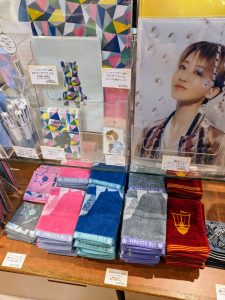
Lots of stuff of Makoto Rei – the top star of the Star Troupe, who put on RRR.

Myaku-myaku, the 2025 Osaka World Expo mascot, makes an appearance, in costume!!!
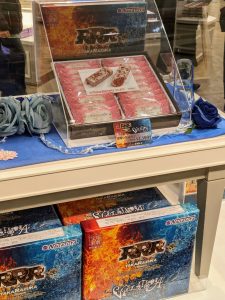
RRR & Takarazuka-branded omiyage. I’m not sure why “strawberry puff”.
There are also hyper-specific traditions associated with Takarazuka performances. For one, there’s a custom among diehard fans to go see the same show five, six, seven times; even if they don’t like the story, they’ll go to support their favorite performer! In-person fan clubs are formed around each Takarasienne with exclusive membership, meeting times, and coordinated group ticket purchases, with each club designing and producing its own merchandise, organizing tea parties and dinner shows, etc. And when it comes to actually securing tickets to a performance, they’re near-impossible to get, at least for any normal person: there are pre-sales for pre-sales for pre-sales, lotteries for lotteries, dozens of different physical and digital retail outlets drawing from different ticket pools, access to which can be dictated by which fan clubs you’re a (paid) member of, if you’ve applied for the official Takarazuka Revue credit card (yes, this is a thing), or if your bank happens to give you any special promotional benefits… and on and on. Shows have standing room in back and nearly every performance is not only sold out, but oversold. There’s even an entire category on Yahoo! Auctions (Japan’s version of eBay, essentially) dedicated specifically to various sub-categories of Takarazuka-related goods; this one theatre troupe is arguably just as well-known here, in this one country, as the entire concept of “Broadway” is in the West.
Other traditions seem to have died down since COVID, not yet revived – perhaps a partially lost cultural memory – but the English-language Takarazuka wiki details them well. For example, at both the smaller Tokyo theater and the original Grand Theater in Takarazuka, Hyōgo Prefecture that I went to (known to fans as 村 mura, “the village”), ritual-like 入待ち irimachi “entrance-waiting” and 出待ち demachi “exit-waiting” are usually practiced by fan club members and guests who watch performers enter and leave the theatre via the stage doors, dressed up in their own costumes (“club wear”) to match Takarasiennes’ outfits, while they hold out personal postcards or letters or gifts, cheer with paper fans… and then these waiting areas are divided into multiple sections, “guard” and “gallery” to delineate who should stand where, who can take pictures or not, when people can leave, and so on. It’s a lot!
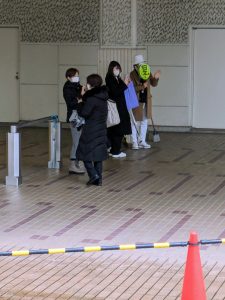
The very small fan club waiting to greet performers entering the theater. His uchiwa has the character 星 hoshi “star” on it.
I missed the official on-sale date for tickets (as if I could have gotten them anyway), so I bought some resale ones that weren’t too much of a ripoff for what was a quite good seat. I even rented some opera glasses – Star Troupe-themed, of course – just so I could feel like a fancy theater-goer, and see actresses’ costumes and facial expressions in detail.

The woman from before & her friend loved my unintentionally well-themed tiger hat and wanted to take pictures of us posing on the staircase in the lobby.
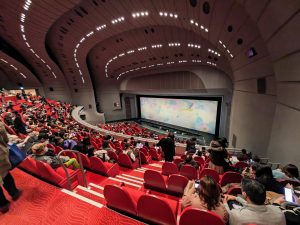
I was sitting at the edge in the second row from the front. The balcony wall had this amusing sign on it.
Obviously no pictures or videos were allowed of the show itself, but it was fantastic and hilarious, as expected, matching the movie well – definitely an experience. The physicality of body, movement, color, and light in how the elements of fire and water were represented was excellent, exactly what I love about live theatre. The curved stage’s bridge-like walkway with an orchestra pit in the middle, allowing performers to cross out into the audience or step down into it via carpeted stairs, in tandem with a rotating stage and a variety of different sets, really made for some incredible scenes. The movie’s bridge/train wreck scene in particular, ending with the flying handshake, was realized perfectly.
The show (like all Takarazuka productions) was two parts, with the first being the hour-and-a-half RRR musical. The latter, post-intermission, was a revue titled VIOLETOPIA, an hour-long continuous performance with increasingly luxurious costumes dedicated to celebrating the Revue’s 110th anniversary, titled and themed around the symbol of violets.

View from the standing area at the far back of the first floor (stalls) during the 35-minute intermission.
After the show, I spent some time in the Takarazuka Hall of Fame, located on floors 2–3, which exhibits photos, historical costumes, props, and handprints of “graduates” and staff members who significantly contributed to the development of the Revue. Photos weren’t allowed for the most part except for in the final room, where the costumes for the Star Troupe’s 2023 performance of 1789: Les Amants de la Bastille (have always wanted to see this musical!!) were on display. I’m admittedly not a huge fan of elaborate, ornate clothing like this, or really “fashion” as a whole… but I do appreciate the technical skill and meticulousness on display. Nearby, there was also a photo studio called Salon de Takarazuka Stage Studio where (women-only, lol) fans can book appointments to dress up in the various costumes and makeup and get their (expensive) photos taken. I wonder how many people opt to dress in menswear as otokoyaku rather than all the “pretty” outfits and frilly musumeyaku dresses?
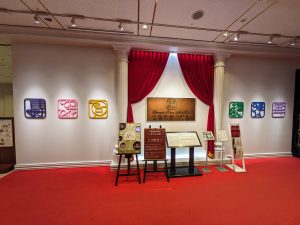
Display with information and each of the six troupes’ symbols on the wall.
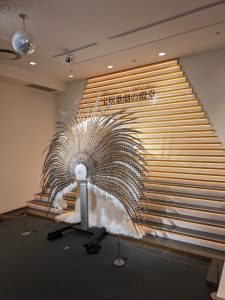
Grand staircase-esque backdrop that fans could stand in front of and pose with a shan-shan.
Finally, I had lunch at Kusunoki, one of the in-house restaurants (run by the Takarazuka Hotel, which is also a part of this whole complex) that prepares meals themed around each currently-performing troupe – so, in this case, the meal integrated star shapes and probably other ~deep lore~ that I ate without prior understanding. I’m allergic to shellfish so they kindly substituted out a few parts of the meal for me, and even wrote down on paper a guide of what replacements they made. 🥲
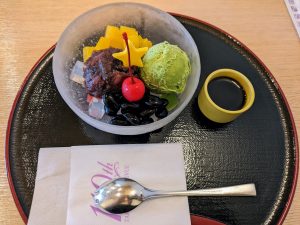
Anmitsu for dessert!
And that’s about it! In the afternoon, I rode the train (Kobayashi heartily chuckling over his enduring success from beyond the grave) down to Kobe, went to a museum exhibit on the history of Animage and Studio Ghibli and then walked around Chinatown/Nankin-machi, and the following day decided to spontaneously check out a moss exhibition at a botanical garden in Osaka. And I of course continued to collect eki-stamps at all the stations I stopped at, which are now conveniently, digitally located on a new blog page here. Seeing my first Takarazuka show was pretty great, especially as it was one based on a movie I already loved – and I’m looking forward to attending & writing about some more theatre experiences (very) soon.
Oh, also, everyone should watch this short Takarazuka video too. :^)
Thanks for reading!

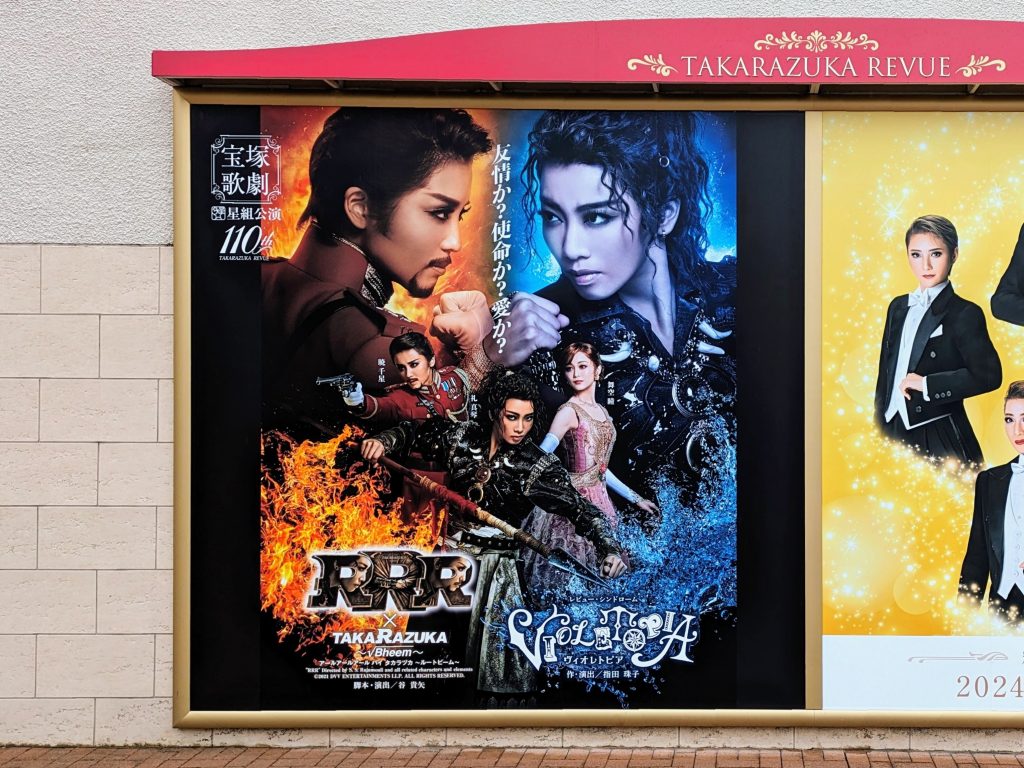



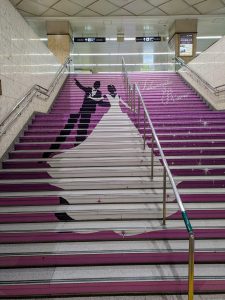
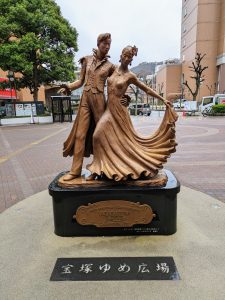
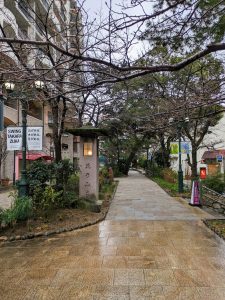


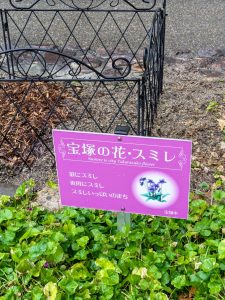

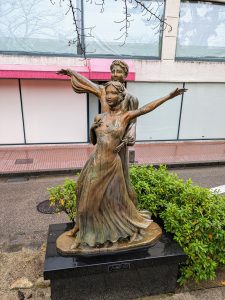
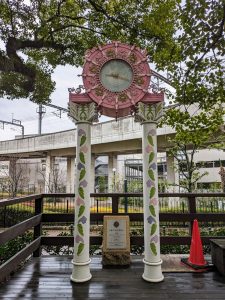




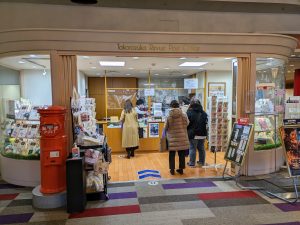

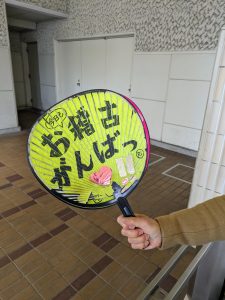

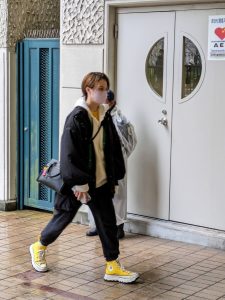
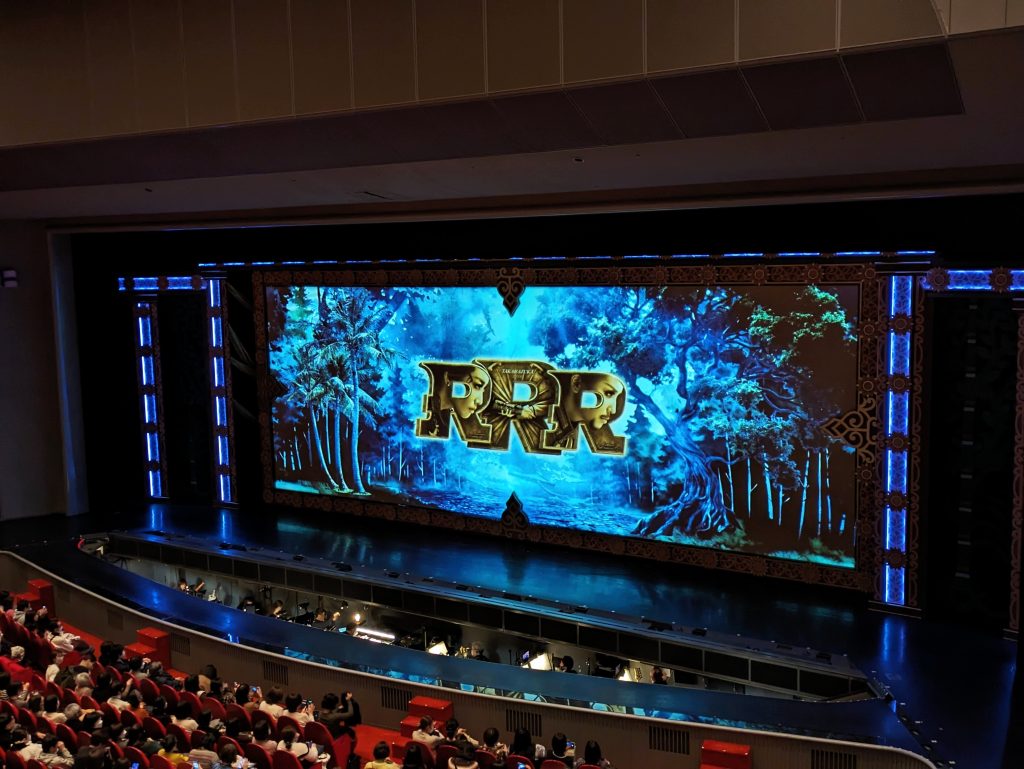
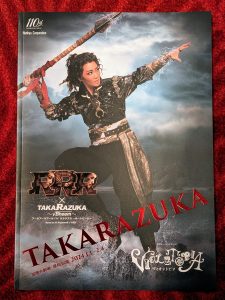

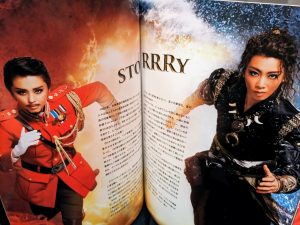

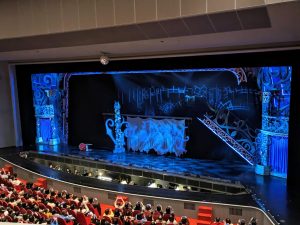


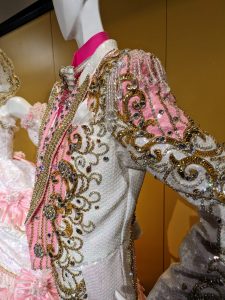
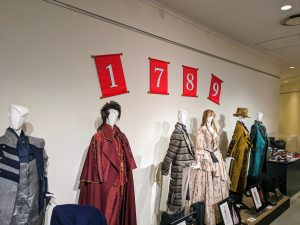




Loved the writeup! Keep up the adventures!
Thanks a ton for taking the time to comment (and for the really nice feedback on Reddit too!!) Happy to hear you enjoyed it. Will do! :)
A joy to read, thank you for writing!! I want to go to a show one day!!😭
Thank you so much for the kind words!!! I sincerely hope you can, it was so fun!
Hi! It was very interesting to read as I’ve managed to get tickets for Eternal Voice in April! (I had to wake up at 2:00am to get ready for the opening sale at 10:00am japan time). Funny thing is that I don’t have any seat number on my vouchers, does it mean that i’m yet not sure to enter the show (because it was oversell?).
Are you fluent in japanese? I was wondering if there are any audio guide translation?
How long before the show time do you recommend to arrive? Thank you
Hi, I’m glad you liked the post & found it helpful! I don’t know too much about Takarazuka as this was my first show, and ticketing systems in Japan are often pretty idiosyncratic… I would expect *some* seat number to be on the ticket, though, unless it’s for the standing section maybe?
I would recommend posting about your situation with a picture of the ticket on the /r/takarazuka subreddit or in the affiliated Discord and maybe someone there can help. There’s other resources online too, both there and on TakaWiki, that can give you tips and advice (personally, I think a couple hours before would be good if you want to explore the area!) Enjoy!!
Which scene did you loved watching the most?
Oh man, it’s been a while and I don’t remember everything in quite as high fidelity as when I saw it a year ago, but as I wrote, the bridge/train wreck scene was pretty amazing (as expected, honestly!)
Hi! We are two Spanish women visiting Japan at the end of the month, and we would love to see a Takarazuka performance. While looking online for tickets for the 31st, we found your comment on Reddit where you mentioned that you had bought them through ticket.co.jp.
We’ve been checking which tickets to buy since several options are available, but we’ve noticed a lot of instructions and tags that we don’t fully understand. Some tickets are mailed, others are handed over in person before the show starts, and some have the buyer’s name on them.
Could you explain how you managed to buy a ticket? Do they ask for ID to check if the name matches the person using the ticket, or how did you contact the seller if you arranged to meet near the theater? Anything you could tell us would be really helpful. Thank you!
Hi! I got it sent via mail and I think that’s the usual way. I wouldn’t think they’d deliver outside of Japan though. For the name thing, from my understanding, it’s up to you if you want to risk it; in theory they could ask but in practice they rarely do (but having a Japanese name on the ticket and you not being Japanese might make them do that?) Mine didn’t have a name on it. I frankly don’t really know that much and only had this one-off experience, but /r/takarazuka – that’s where the seasoned experts are – will know a lot more and IMO would be a good place to poke around or ask!
Hi again, thank you for replying.
So, I’ve been checking Reddit forums but haven’t found much more information. There are no tickets available for foreigners on the official Takarazuka website. So I tried to buy them on ticket.co.jp.
The problem is that when I go to fill in my information, it asks me to enter my name and surname in Kanji and Katakana. Since I have a Spanish name and surname, I’m not sure how to complete the form—especially because it also has to match my ID, in my case, my passport.
Any ideas?
Sorry, I don’t really know, I’m a resident and only used the site once. Apparently they might only take JP payment methods too. You should actively *post* to Reddit yourself and ask there since those people are much more familiar with this all than I am!